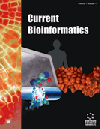
Full text loading...
We use cookies to track usage and preferences.I Understand

Genetic information about organisms' traits is stored and encoded in deoxyribonucleic acid (DNA) sequences. The fundamental inquiry into the storage mechanisms of this genetic information within genomes has long been of interest to geneticists and biophysicists.
The objective of this study was to investigate the distribution of coding sequence (CDS) lengths in species genomes across different kingdoms.
In this study, we used the maximum entropy principle and the gamma distribution model based on a comprehensive dataset including viruses, archaea, bacteria, and eukaryote species.
Our study result revealed unique patterns in CDS length distributions among kingdoms and CDS lengths exhibit a right-skewed distribution, with varying preferences among kingdoms. Eukaryotes displayed bimodal distributions, with CDS sequences longer than those of prokaryotes. Fitting the gamma distribution model revealed differences in shape and scale parameters among kingdoms, with eukaryotes exhibiting larger scale parameters, indicating longer CDS sequences. Additionally, analysis of moments highlighted the complexity of eukaryotic genomes relative to prokaryotes.
This study result deepens our understanding of genome evolution and provides valuable insights for biological research.

Article metrics loading...

Full text loading...
References


Data & Media loading...